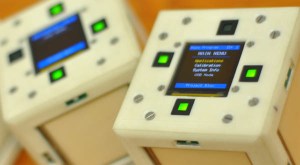
When [Jim’s] thirty year old Pachinko machine started to freeze up and shorted out his computer’s graphics card he decided it was time to replace the old electronics with an Arduino. Originally the Pachinko machine ran off a 48 volt supply and control was achieved using about 20 relays, the random numbers were generated using some complex mechanical reels which we hope will find their way into a new project in the future.
All of this and the daunting amount of wire inside the machine have been replaced with an Arduino and an MP3 Shield for the sound effects, powered from a much safer 12 volts. The new machine runs just as you would expect a thirty year old machine to run, with all the grinding sounds and flickering lights. Check out the video after the break to see an overview of the project.
Continue reading “Thirty Year Old Pachinko Machine Meets An Arduino”














